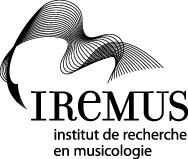WRITINGS
GALLIANO Luciana
Musique concrète in Japan
Edition: Proceedings of the Electroacoustic Music Studies Network Conference, Paris, 2008, on line: http://www.ems-network.org/ems08/abstract.html.
Date: 2008
Region: JAPAN
Origin: FRANCE
Type of media: Abstract
Language: English
Editor: M.B.
Comment:
Abstract:
The first move of using ambiental sound in music occurred in Japan for the effort of Mayuzumi Toshiro, who came back at the end of 1952 after having known the research in Paris. It occurred also among ideas and works of avant-garde group Jikken Kōbō, wholly indipendently from the ongoing research in Europe. Compared with the European, the research on concrete sounds done by Jikken Kōbō’s members was moved by similar yet different intentions. The aural-visual realizations of the group explored the possibility of building an imaginary artistic landscape full of symbols and references, like in Takemitsu’s AI or in Yuasa’s Aoi no ue but with an allegedly minimum of intervention on the concrete sound itself. This is completely in line with the definitione by Pierre Schaeffer of musique concrète as “pieces of time torn from the cosmos”. The different weight of empiricism between the two musical cultures however, in using sounds as “belonging to the world” was very probably due to the specific role sound and noise play in Japanese music, and, more obviously, to the role sound/noise plays as culture references in the construction of identity, and whose word in Japan might be more “whole” then “beyond”. In Japanese contemporary music the role of sounds and noise has nevertheless been somehow doomed since it has completely lost that character of disrupting Western music and its genres – as might be seen in the works of Yoshimatsu Takashi but even in the early Kosugi Takehisa. The following of these processes generated the outcoming of Japanese noise music.





